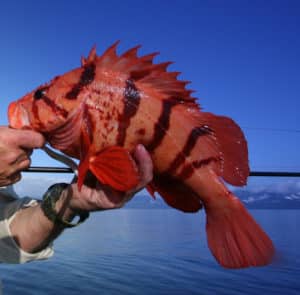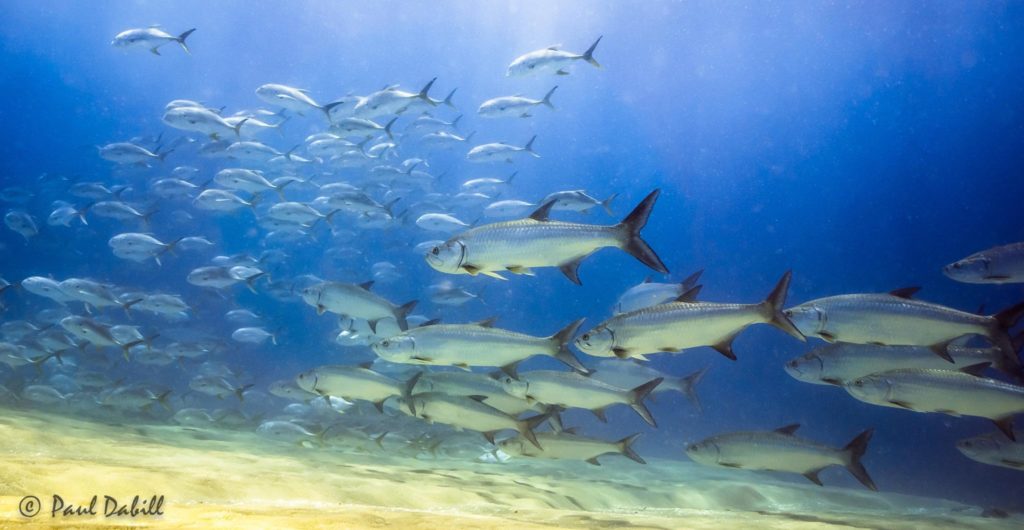
How can you distinguish dyed-in-the-scales tarpon fanatics from other anglers? It’s easy. Broach topics like sports, politics, religion or business, and all you’ll get is a wan smile and an appeasing head nod. Mention tarpon, however, and it’s like plugging in the Christmas tree lights — eyes go ablaze and hearts go aflutter.
What accounts for this love of fishing for Megalops atlanticus, better known as tarpon, silver kings and poons? They’re big, they’re powerful and they’re beautiful. And, once the hook is set, the fight is like a choreographed scene replete with hole-in-the-ocean jumps and hold-onto-your-rod-for-dear-life runs.
A great aspect of Florida tarpon fishing is that, depending on the chosen method, even a rookie can land a 100-plus-pounder. That’s most often accomplished by fishing live bait on a circle hook in a channel where poons aggregate. However, the necessary skill level escalates exponentially when sight-fishing for silver kings. That scenario puts an angler on the bow of a skiff in shallow water, wielding the weaponry of light tackle or fly gear.
The best Florida tarpon-fishing seasons vary from one area of the state to another, by habitat and size of fish, and time of day (day vs night). The bottom line is that you can find/catch tarpon somewhere in Florida every month of the year.
Many passionate tarpon tamers progress from the bait-soaking stage to sight-fishing. No matter one’s style preference, however, Florida tops all states in presenting year-round opportunities for catching tarpon.
How to Catch Tarpon
Before the advent of circle hooks, it was difficult to master the timing needed to set the hook on a tarpon. Their bony mouths coupled with a penchant for quickly dispelling hooks with frantic jumps and furious head shakes usually left anglers with short-lived thrills. Circle hooks changed all that.
Live baits such as mullet, horse shrimp, pinfish, pilchards and crabs on a circle hook often seduce hungry poons. Free-line the offering so it floats with the current or tie the line several feet above the bait to a balloon that breaks away when a strike occurs. Cut baits weighted to lay on the bottom also get their measure of strikes, as tarpon are avid scavengers.
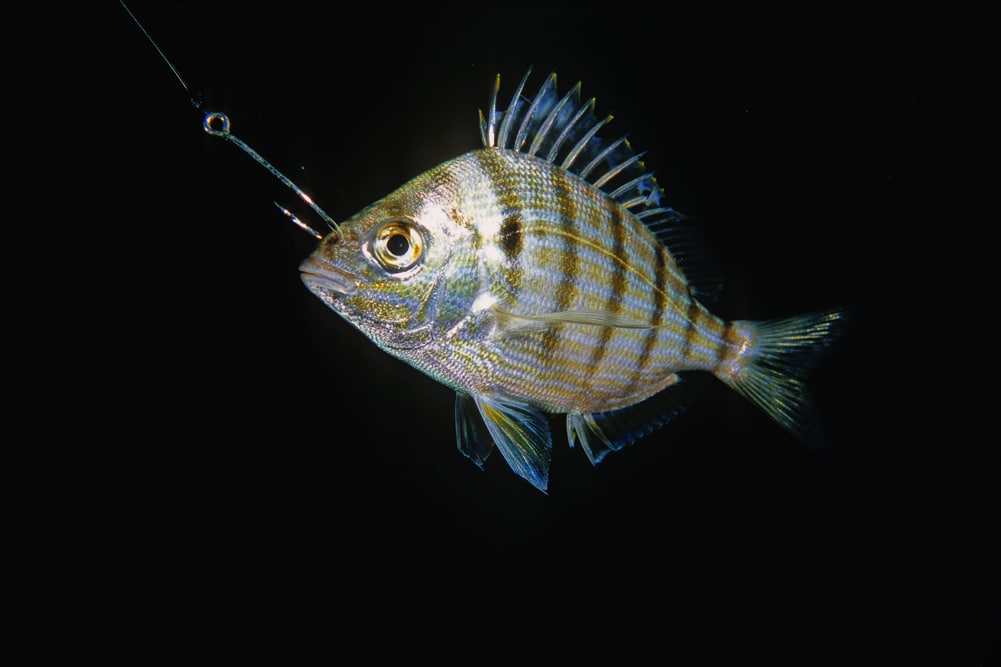
When you get a hit, remove slack and let the circle hook do its job as designed by turning and lodging into the corner of the fish’s jaw. Tarpon average 30 to 80 pounds, but big mommas and poppas can run double those sizes and more. Unless you’re deft at quickly landing a big fish on light tackle, go with medium to heavy spin or conventional gear and a sturdy measure of fluorocarbon leader. Avoid overly long battles if possible, as these often render tarpon too tired to escape the mighty maws of hammerheads or bull sharks.
Catching tarpon on lures is big fun, especially fish less than 100 pounds, with sturdy saltwater hooks.
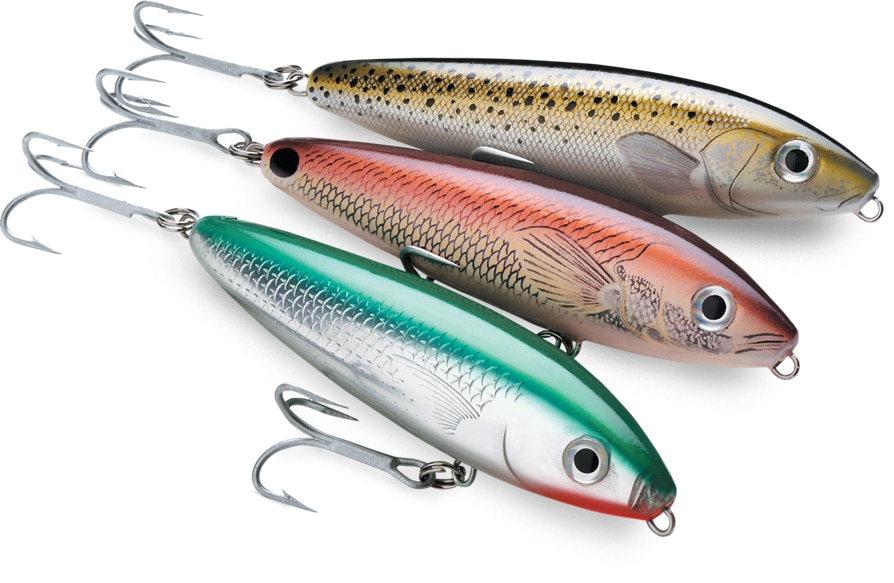
They will hit just about anything worked slowly with a bit of flash and color emulating minnows. Top-water, sinking and diving lures do well — go with single hooks rather than trebles to reduce jaw damage.
Once a tarpon is hooked, keep the pressure on when the fish runs. Follow if in a boat; if fishing from shore or a pier, you’d better have a large-arbor reel with plenty of line or you’ll be spooled.
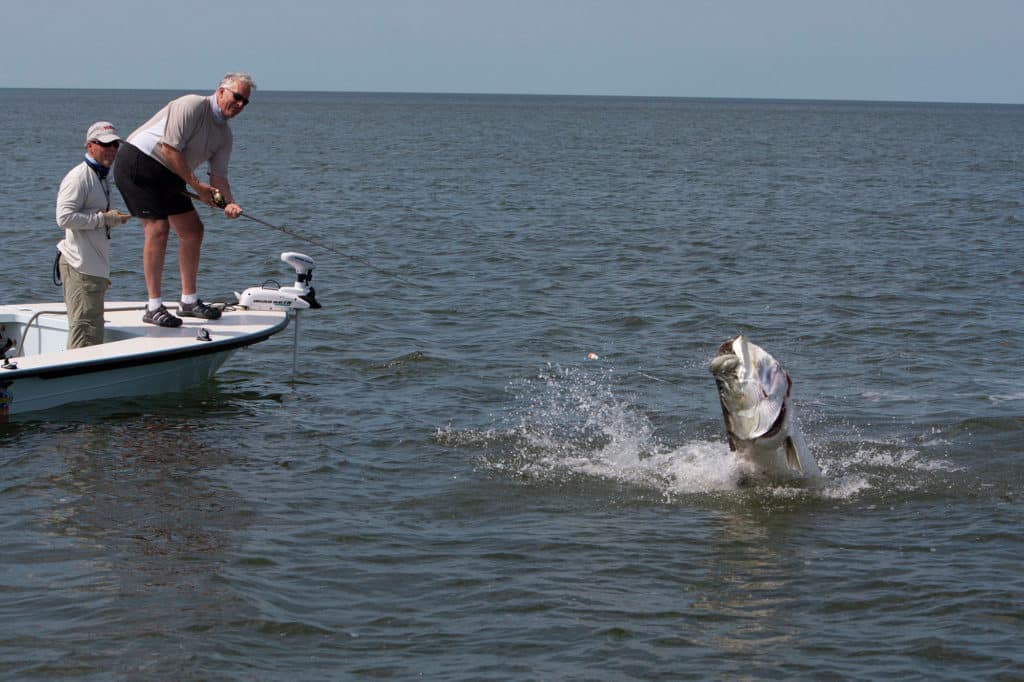
When the poon stops running, pump-and-wind like a metronome on speed. At the first sight of the fish going airborne, “bow to the king” by pointing your rod at the fish and leaning toward it to create line slack. If a big fish jumps and lands away from you, a taut line often breaks.
Look for signs of tarpon such as rolling at the surface to gulp air or swirling at the water’s surface caused by their tails. Chumming by stunning live baits (squeeze the heads or bounce them off an outboard engine’s cowling) will quickly reveal if you’re amid poons or instead need to reposition.
The following tarpon fishing locations are but a few of the many silver king kingdoms around Florida, but are among the best-known.
Four of the Best Tarpon Fishing Locations in Florida
1. Tarpon Fishing in the Florida Keys
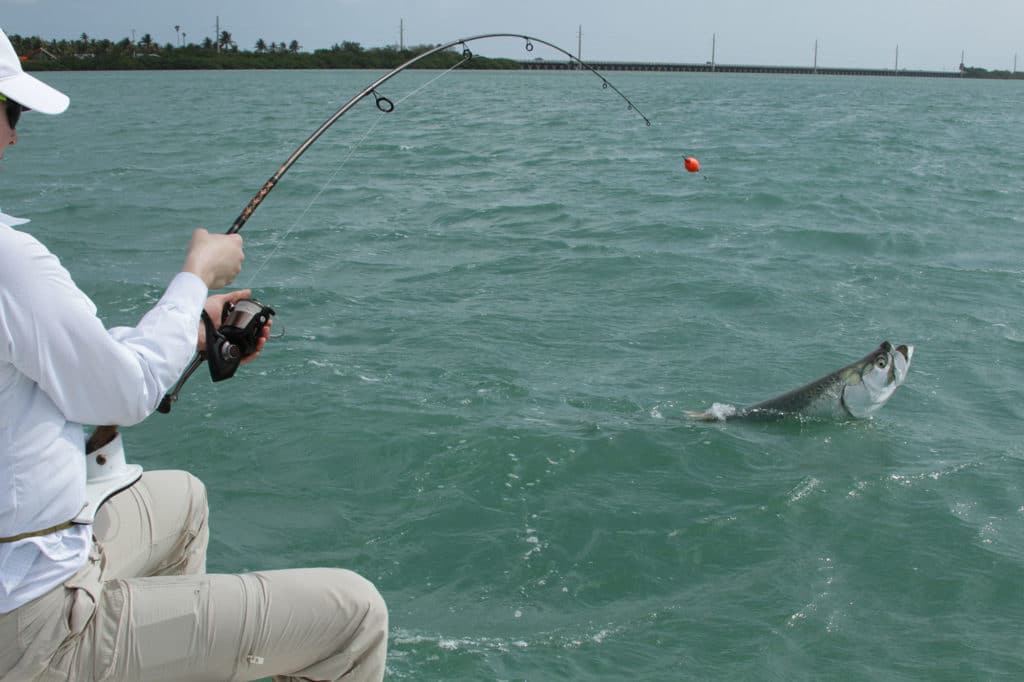
Almost all line-class and fly-tippet world records for tarpon caught in U.S. waters come from the Florida Keys (usually referred to simply as the Keys). These 43 islands connected by 42 bridges extend over 100 miles southwest of Miami from Key Largo to Key West. The Keys form a separation between the Atlantic Ocean and the Gulf of Mexico, including the shallow estuary of Florida Bay.
Flushed and nourished daily by ocean and Gulf tidal currents, the reefs, channels, canals, bridges and flats host a food chain from invertebrates to shellfish to baitfish. This abundance makes for an expansive game fish restaurant, and diners like tarpon don’t need to make reservations. While some poons are residential in nature and remain permanent locals, studies reveal that in the spring and fall, large schools of tarpon follow migrating mullet swimming up and down both Florida’s coasts and in and around the Keys.
If you like to play bridge, you can pick up tarpon in the Upper Keys at Bridge #2, Bridge #5, Long Key Bridge and Seven Mile Bridge. Florida Bay is a prime area, particularly the deeper moats around some of the small keys and in channels bisecting the myriad mud and grass flats. The Atlantic and Gulf “strips” — the edges of flats around Islamorada, Marathon and Key West — are renowned tarpon sites. Same goes for Key West Harbor.
2. Tarpon Fishing in Miami
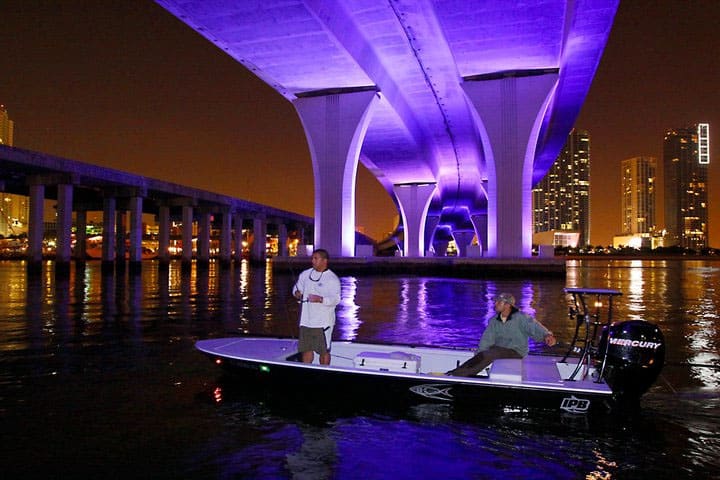
Deep cuts with a lot of moving water excite tarpon populations off Miami and around Biscayne Bay. The most prolific haunt for tarpon year after year is Government Cut. It’s the manmade channel with a U.S. Coast Guard station on one side and, on the other, Miami’s port that features a slew of cruise and cargo ships. This wide and deep cut divides Miami Beach from Fisher Island, with a jetty at the mouth.
Late afternoons and evenings, with a moving tide, make for frequent tarpon encounters and a respite from the tropical sun. Full moons in April, May and June are notorious for tarpon action. If relegated to one choice of baits, go with a silver-dollar-size blue crab. It’s nice, though, to have a complement of offerings besides crabs, such as fresh-cut bait or diving/noisy lures.
Mullet migrate along the beaches during the fall, making for good shore fishing near Haulover Inlet. Bear Cut is known to hold poons, especially those loitering between Biscayne Bay and Key Largo.
3. Tarpon Fishing in Boca Grande
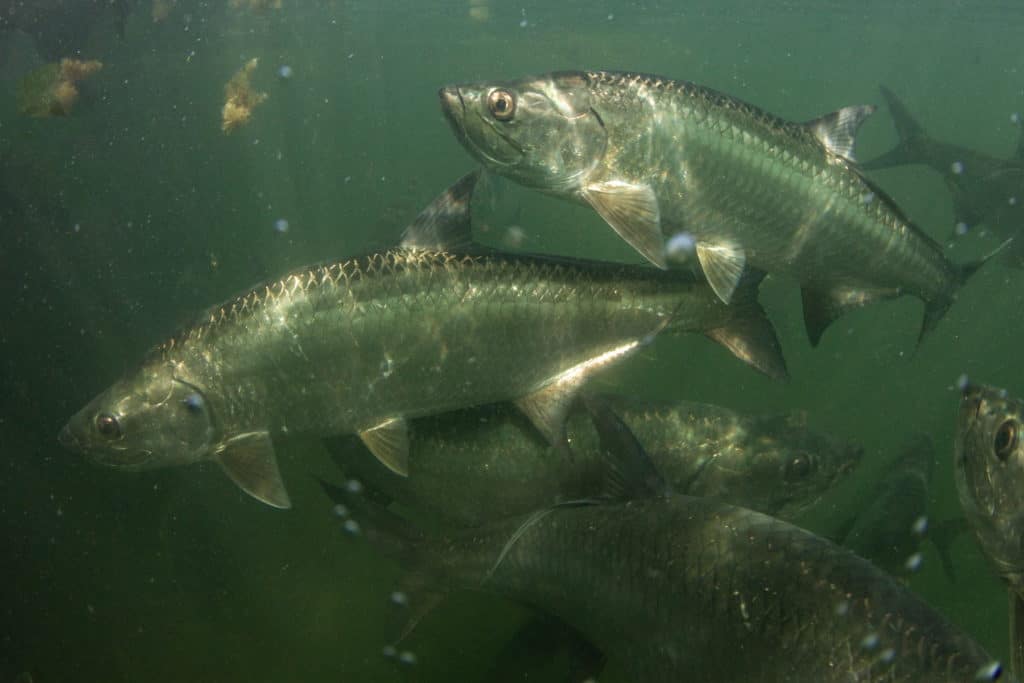
Calling itself the “Tarpon Capital of the World,” Boca Grande Pass’s tarpon action can become so frenzied at times with so many simultaneous hook-ups that it becomes quite a spectacle just watching skiffs winding in and around each other to avoid breakoffs.
Boca Grande Pass divides the southern end of Gasparilla Island and the northern portion of Cayo Costa. The pass is southwest of the outflow of Charlotte Harbor, which itself is a repository of spawning tarpon from spring to October. Boca Grande Pass is deep, ranging from just over 30 feet to nearly 70 feet.
From early April through July, schools of tarpon sometimes numbering in the hundreds migrate through the pass. Because of the swiftness of the current here, the drill is to drift the pass rather than anchor. Baits, lures (particularly tipped jigs) and flies of all types do well. Due to the large congregations of tarpon often present, fishing tournaments are popular, and a day’s fishing for an angler often results in multiple poon encounters.
I once battled a silver king in the 80-pound range on fly during a May visit, with scores of other skiffs present. Experienced guides were artful in averting tangles, but a few neophytes didn’t move their skiffs out of the way in time and a prop eventually dashed my clash. It didn’t make me very happy, but soon enough another battle ensued successfully.
4. Tarpon Fishing in Tampa Bay
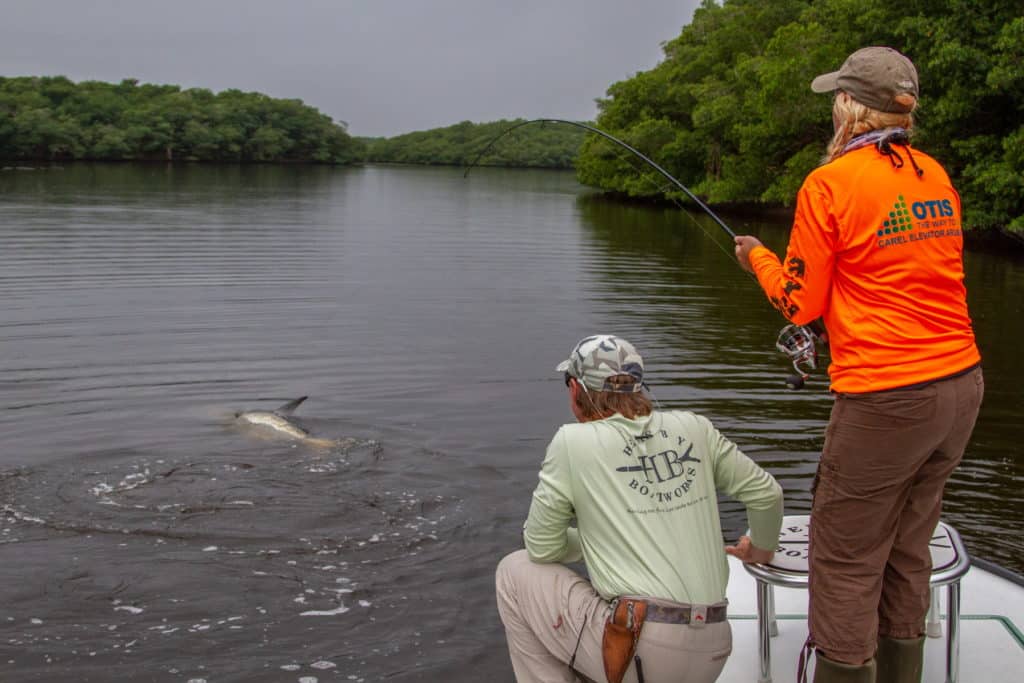
Satellite tagging has revealed that tarpon migrate from as far as Mexico, following the Gulf coast to the Florida Keys and up the state’s Atlantic coast. At various times that brings silver kings off Tampa Bay, providing a number of haunts for anglers to check out.
One of the prime locations is Egmont Channel just north of Egmont Key at the mouth of Tampa Bay. It’s an ultra-deep channel by Florida standards, with depths exceeding 80 feet in some spots. An outgoing tide often flushes huge numbers of crabs from the bay through the channel and out into the Gulf. Tarpon know it well, and so do savvy anglers.
Drift with the tide and free-line a circle-hooked crab amid the fray. It’s some of the best tarpon fishing in the world when the action gets hot.
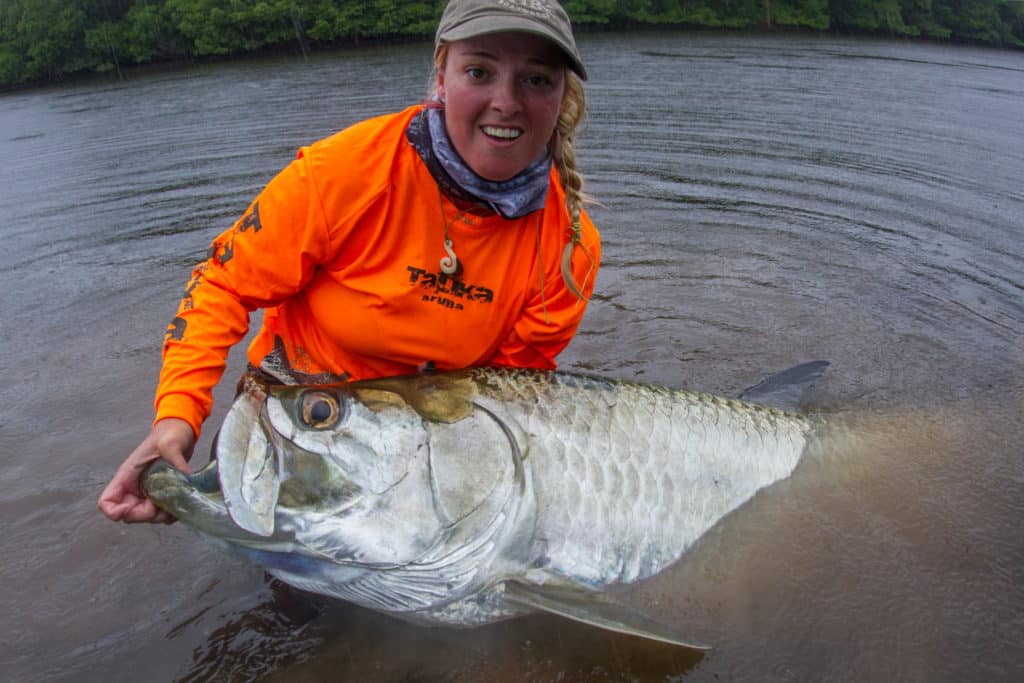
Other promising locations to pounce on poons include John’s Pass, Sunshine Skyway Bridge, Anna Maria Island, Fort De Soto Park, and beaches from Longboat Key to Pass-A-Grille. Dependable baits include menhaden, greenbacks (aka whitebaits), crabs and pinfish. If bait is scarce, cast deep-diving, shiny-and-noisy single-hook plugs.

